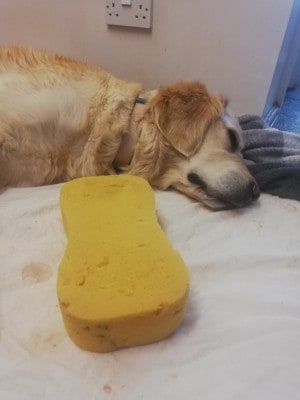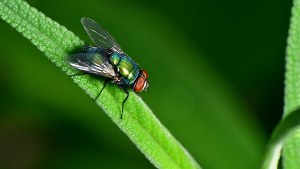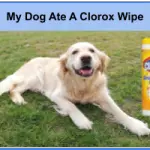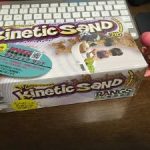
Sponges come on all shapes and forms- from the sponge balls created to keep our young children safe to the makeup sponges which help apply a near perfect finish to the myriad of sponges that we use to clean whether that is in the kitchen or the shower.
It is hard to think of our modern lives without using sponges, but what happens if our dogs eat one?
That is the question that I have tried to answer in this article.
I got carried away as I was writing it because I didn’t realise that biodegradable sponges are big sellers.
And this got me thinking about whether these sponges could be digested by dogs?!
I think that “the jury is still out” on that one!
But to stop my prattling, let’s find out what you should do if your dog does eat a sponge!
My dog ate a sponge- what should I do? Five Factors
Even with my “latest” research on cellulose sponges, there are lots of different factors that will influence your course of action.
- the type of plastic sponge that the dog ate,
- how it was eaten,
- whether it had any contaminants on it
- the size of the dog
- Sea sponges
So let’s take an individual look at each of these.
Plastic sponges
As I mentioned briefly above, these sponges will not be digested by the dog’s system, however strong their stomach acid is meant to be.
Fortunately, foam made out of just polyester is by its very nature very soft and so this will be a bonus as it makes its way through your dog’s system because it is less likely to irritate the lining of the organs in your dog’s body.
A more abrasive scrub layer on a sponge could it be a different proposition. This tougher layer, made out of polyurethane not polyester might graze or cut the lining.
I think that this will be pretty unlikely because of how wet it will be.
Having looked at plastic sponges, I want to move on and look at how the sponge was eaten.
How the sponge was eaten
OK, I know, perhaps I have phrased this very poorly as it sounds as if I am conjuring a picture of a dog eating a sponge with a side of fries!
What I really mean is whether your dog swallowed the sponge whole or chewed it up into smaller pieces.
And however poorly that I phrase this idea, it is a very big factor in deciding if your dog will need to be seen by a vet or not.
A dog that chews up a sponge into tiny pieces is probably much safer than a dog who swallows a sponge whole or who tears it into just two pieces and swallows those.
These tiny pieces will probably travel the whole way through your dog’s body without incident.
I mean, I’m not saying that your dog will find pooping a particularly comfortable experience for a few days…
Small pieces of a sponge are far less likely to cause a blockage in your dog’s system than larger pieces.
These large pieces could cause a blockage in your dog’s throat or in their intestine.
Whether the sponge had any contaminants on it
So far in our discussion about your dog eating a sponge we have looked at it from the point of view of the sponge being clean.
And by that I mean that it doesn’t “contain” any other substances or chemicals.
But, the likelihood of that is very low because that is not how we use sponges in our homes.
Sponges are normally used in conjunction with something else.
Kitchen sponges can be used with dish soap or bleach, makeup sponges might have a layer of makeup on them and our loafer for cleaning our backs in the shower, will probably have remnants of shower gel on it.
Thinking about it, the safest option for you will be if your dog chews a sponge tennis ball that might have a bit of mud on it!
All of the contaminants mentioned on my list are a serious concern.
I don’t think that dish soap, shower gel or makeup will be frighteningly toxic for your dog but they are something else to think about on top of the fact that your dog has eaten a sponge.
These substances might cause your dog to vomit or they might cause your dog to have a touch of diarrhea as it tries to absorb these “alien” substances.
I thought that bleach might present some real difficulties if your dog ingested it on a sponge, but apparently not.
Most household bleaches will be an irritant, but no more.
Ultra concentrated or color safe bleaches are a veterinary emergency because they are corrosive and could cause significant internal and external burns.
The size of the dog
When a dog eats anything that they shouldn’t, a key concern is the size of the dog compared to the amount of “the thing” that they ate.
This is because larger dogs can, on the whole, tolerate eating more of something than smaller dogs.
And another important aspect of this is the age of your dog.
Puppies have young and immature bodies and so they are far less able to cope with eating a non food item than a more mature dog.
Sea sponges
Earlier we spoke about an emerging trend of making sponges out of cellulose and not plastic.
Well, they say that everything goes full circle.
And by this I mean that sponges in the sense that we know and use them have been around for thousands of years.
There are reliable records showing that the Romans and Ancient Egyptians used sponges.
Now, of course, they weren’t using foam sponges but they were using sea sponges, which are simple animals that live in the sea.
And you can still buy sea sponges today as something to help clean yourself whilst having a bath…
Anyway, my point is that sea sponges are an even more natural product than cellulose sponges (because they aren’t processed as much) and that if your dog eats a sea sponge there is a strong possibility of it being digested.
Not all sponges are created equally
Now if you are any like me then you might just that all sponges were basically made out of foam, which is a form of plastic.
Yes, some sponges are bigger, some smaller but they are all just basically foam and some have a more abrasive layer on top, which is a slightly tougher form of foam.
So if we take a pretty standard kitchen sponge which is mostly yellow with a thin layer of green on top, the main yellow body of a sponge is made from polyester, which is one form of plastic.
The layer of “scrub” on top is made from polyurethane, which is more durable.
And because plastic doesn’t break down or decompose, then this spells trouble for the environment and for any dog that has eaten one.
A plastic sponge won’t break down in a dog’s stomach- you just have to hope that it will pass safely through the dog and come out in their stool.
But having done a bit of research, I have found out that more and more sponges are made of cellulose, which is essentially wood pulp.
In fact one of the top brands of scrub sponges and a current best seller on Amazon, is a cellulose sponge.
I can’t find any specific information about how well these cellulose sponges biodegrade. I know that they do because lots of websites confirm this fact.
But I’m not sure how quickly they do degrade- particularly when they are in a dog’s stomach.
I did find one very interesting forum thread that focused on a dog who ate a cellulose sponge.
But nowhere is it explicitly mentioned that because the sponge is cellulose, there is no need to worry about a dog eating it.
Three symptoms to look out for if your dog has eaten a sponge
There are three symptoms that you should be on the lookout.
If you notice any of these symptoms with your dog, it is best to phone your vet and ask their advice.
They might want you to bring your dog in to see a vet or to keep observing your dog at home.
Vomiting
How did you know that I was going to include vomiting in this list?!
Your dog might vomit immediately after their “sponge supper” or they might vomit hours or days later.
An immediate vomit is good news because this is a natural reaction and hopefully most of the sponge will reappear.
Delayed vomiting is more serious because it suggests that pieces of the sponge are stuck somewhere in your dog’s system.
Your dog might also throw up partly digested food.
This also suggests that there might be a blockage.
Phone your vet and give them as much detail as you can.
Diarrhea
Hopefully your dog will have a bit of short term diarrhea within a day or two of eating the sponge.
By short term, I mean that 24 hours after the onset of the diarrhea, your dog’s stools have returned to normal.
If the diarrhea goes on for any longer than 24 hours then phone the vet because it implies that either a piece of sponge is stuck or it has damaged one of the organs.
Constipation
If your dog fails to poop within 24 hours of the incident and they would normally poop within that time frame, phone the vet.
The symptom would suggest that there is a serious internal blockage somewhere.
Two reasons why dogs like eating sponges?
The first reason is that some dogs will just eat anything, whether it is food or not.
And dogs that consistently eat non food items such as underwear or rocks or their beds have a medical condition called Pica.
No one knows for sure why a dog would want to regularly eat items that are meant to be eaten.
Some vets believe it is because the food that they are eating isn’t nourishing enough, other professionals think it might be because a dog has a severe form of separation anxiety.
The second reason is that sponges most of the time have an interesting smell to them because of a chemical or substance that has been used with them (and I touched on that earlier.)
And as well as having an irresistible odour to them because of a chemical, to a dog they are also attractive because of the smell of food, germs, dirt or grime that a sponge might have!





